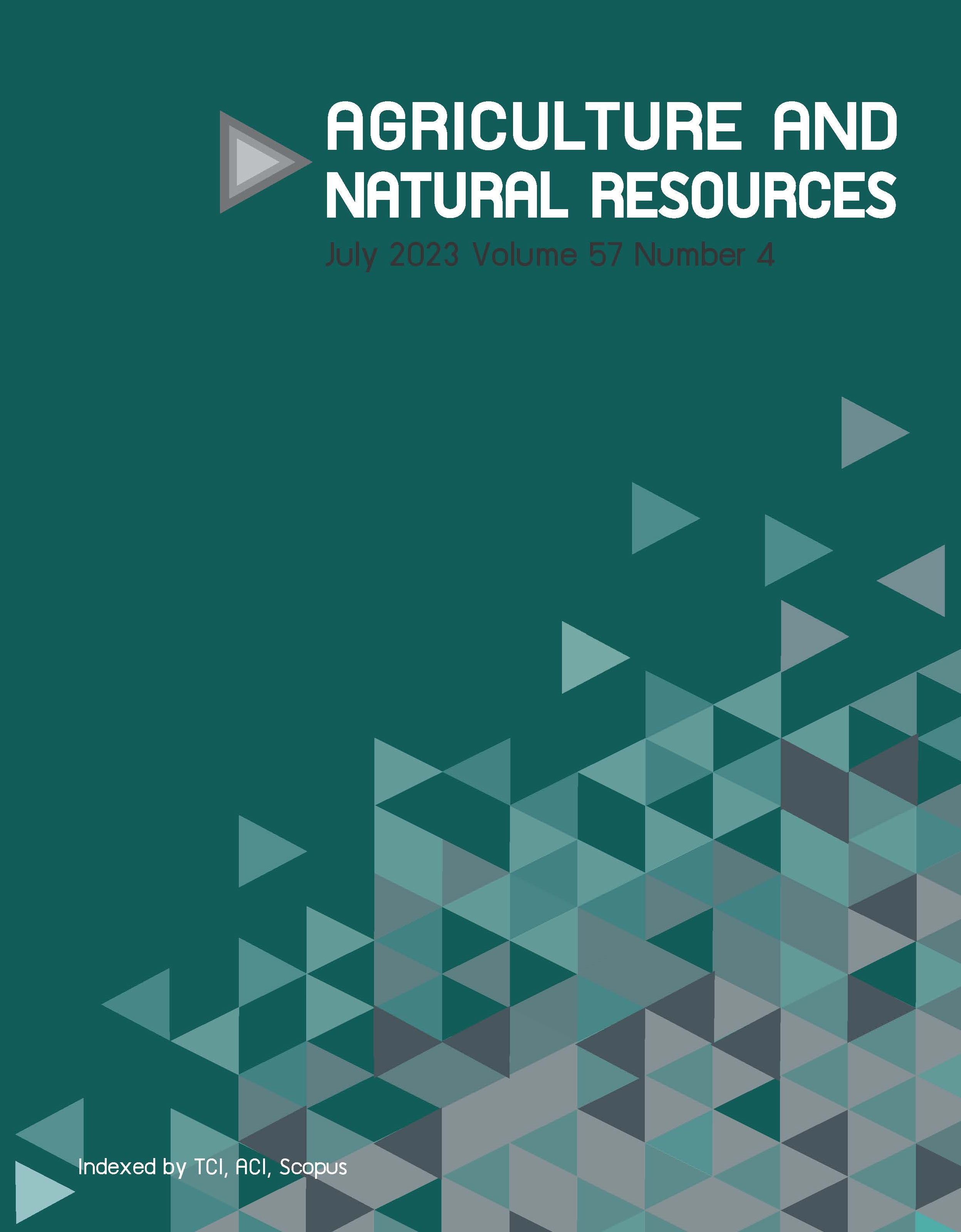Responses of physiological traits, growth and yield of rice to drought stress
Keywords:
Drought, Leaf water potential, Oryza sativa, Proline content, Spermidine contentAbstract
Importance of the work: Rice plants are sensitive to different levels of drought during all growth stages. Drought induces reduced rice growth and yield by affecting the growth parameters and physiological traits related to photosynthate production. The response of rice plants to drought stress is useful information for evaluating drought-tolerant characteristics in high yielding cultivars.
Objectives: To study the growth parameters and physiological traits, yield and yield components of two rice cultivars during various growth stages under polyethylene glycol (PEG)-induced drought stress.
Materials & Methods: The Khao Dawk Mali 105 (KDML 105) and Pathum Thani 1 (PT 1) rice cultivars were grown under two conditions (non-stress and drought stress) in a hydroponic system. The growth parameters, physiological traits and yield were evaluated after water stress induction during the seedling, tillering and flowering stages.
Results: The growth parameters and physiological traits of the two rice cultivars significantly decreased, while the free proline and spermidine contents increased under stress during all growth stages. However, the flowering stage was the most sensitive to drought. In addition, there was a greater decrease in all the studied growth and physiological traits of PT 1 under drought than for those of KDML 105. The grain yield was reduced by 35.9−50% for PT 1 and by 18.6−31% for KDML 105. Positive correlations were obtained between all the studied physiological traits and grain yield in both cultivars; however, the highest correlation to grain yield was obtained from the leaf water potential (LWP) and net photosynthetic rate.
Main finding: The magnitudes of drought response varied between the cultivars and among the growth stages. PT 1 was more sensitive to drought than KDML 105 and the flowering stage was the most sensitive stage. LWP could be used to study the plant-water status and to evaluate drought-tolerance characteristics, as it had the highest correlation to yield, was less influenced by other variables and could be measured easily during all growth stages without damaging the whole plant.
Downloads
Published
How to Cite
Issue
Section
License
Copyright (c) 2023 Kasetsart Universityonline 2452-316X print 2468-1458/Copyright © 2022. This is an open access article under the CC BY-NC-ND license (http://creativecommons.org/licenses/by-nc-nd/4.0/),
production and hosting by Kasetsart University of Research and Development Institute on behalf of Kasetsart University.







